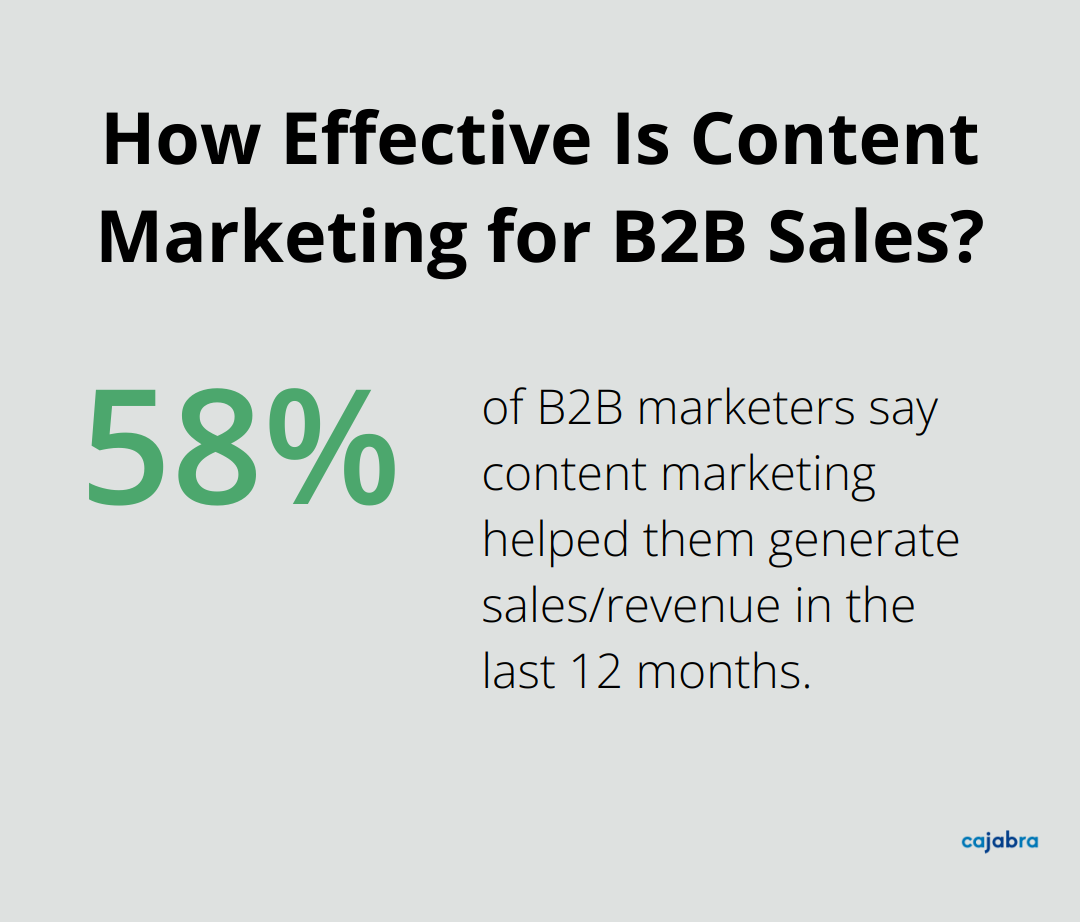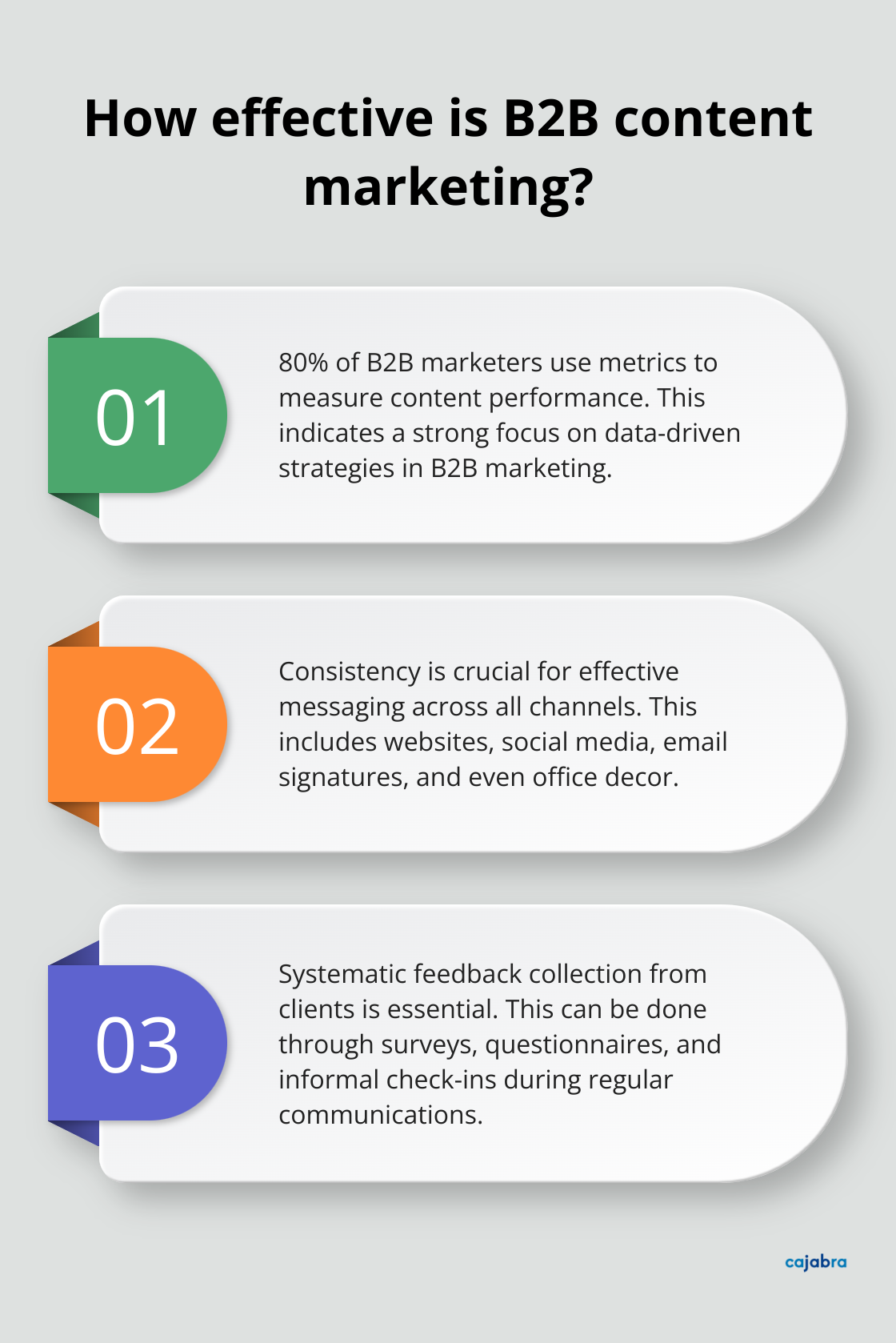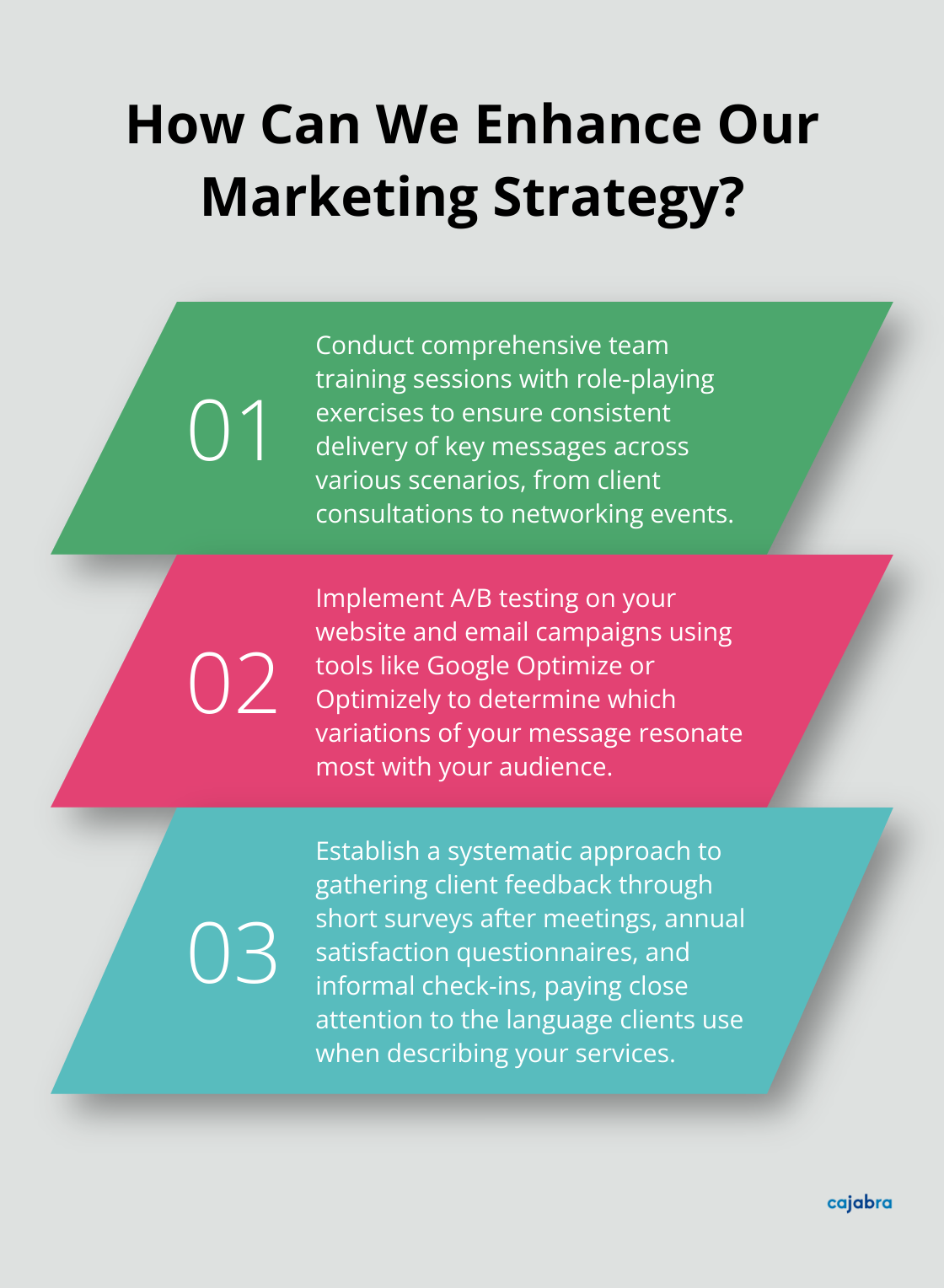
A strong company messaging strategy is the backbone of effective communication with your audience. It's the key to standing out in a crowded market and building lasting connections with customers.
At Cajabra, LLC, we've seen firsthand how a well-crafted messaging approach can transform a business. This guide will walk you through the essential steps to develop a compelling strategy that resonates with your target audience and drives results.
Understanding your audience forms the bedrock of an effective messaging strategy. Start by collecting concrete data about your ideal customers. Tools like Google Analytics or social media insights can reveal age ranges, locations, and income levels. The American Institute of CPAs is transforming its peer review program for firms' accounting and auditing engagements into a technology-driven process, which could provide valuable insights for tailoring your message.

Move beyond surface-level data to explore psychographics - the values, interests, and pain points of your audience. Conduct surveys or interviews with your best clients. Ask about their challenges, goals, and what they value most in a service provider. This qualitative data proves invaluable for crafting messages that truly resonate.
Take a close look at how your competitors communicate. Visit their websites, sign up for their newsletters, and follow their social media. Pay attention to the language they use, the benefits they highlight, and the overall tone of their messaging.
For example, if you notice that most competitors focus solely on tax services, you might find an opportunity to differentiate by emphasizing year-round financial planning. Tools like SEMrush or Ahrefs can provide insights into competitors' keywords and content strategies, helping you identify gaps in the market.
With a clear understanding of your audience and competitors, you can now articulate what sets you apart. Your unique value proposition (UVP) should address a specific need of your target market that competitors aren't fully meeting.
For accounting firms, this might involve specializing in a niche industry, offering cutting-edge technology solutions, or providing exceptional customer service. Whatever it is, make sure it's something you can consistently deliver and that truly matters to your audience.
Ensure your messaging strategy aligns with your company's values and long-term goals. If your firm values innovation, your messaging should reflect that through language about new technologies or forward-thinking approaches.
Consider creating a simple one-page document that outlines your company's mission, vision, and core values. Use this as a reference point when developing your messaging to maintain consistency and authenticity.
Now that you've laid the groundwork by understanding your ideal client's needs, it's time to craft your core message. This next step will help you distill your insights into clear, compelling communication that resonates with your target market.
Your brand statement should encapsulate what you do, who you serve, and why you're different in one or two sentences. For example: "We provide innovative tax solutions for small businesses, leveraging AI to maximize deductions and minimize audit risk." This statement clearly defines the service, target audience, and unique approach.
A study by the Content Marketing Institute found that 58% of B2B marketers say content marketing helped them generate sales/revenue in the last 12 months, up from 42% the previous year. This underscores the importance of articulating your core message.
Your brand voice should reflect your firm's personality and resonate with your target clients. Are you authoritative and professional? Friendly and approachable? Tech-savvy and innovative? Define 3-5 key characteristics that describe your brand's tone.

For instance, if you target startups, your voice might be "innovative, energetic, and straightforward." This would translate into using more dynamic language and focusing on cutting-edge solutions in your communications.
Select 3-4 main themes that support your brand statement. These could include your expertise in a specific industry, your use of advanced technology, or your personalized client approach. Each pillar should address a key pain point or desire of your target audience.
For example, if serving small businesses is a pillar, you might focus on messages about cost-effective solutions, scalable services, and deep understanding of small business challenges. The Journal of Accountancy reports that proactive strategic advice was ranked as the third-highest factor small and medium-size business owners consider when selecting a CPA.
Different platforms require different approaches. LinkedIn might call for more professional, detailed content, while Twitter demands concise, punchy messages. Your website should offer comprehensive information, while email newsletters might focus on timely updates and tips.
A study by HubSpot found that companies using three or more channels in their marketing campaigns saw a 287% higher purchase rate than those using single-channel campaigns. This highlights the importance of adapting your core message across various touchpoints.
Your core message isn't set in stone. You should regularly review and refine it based on client feedback and market changes. The most effective messaging strategies evolve with your firm and your clients' needs. Now that you've crafted your powerful core message, it's time to put it into action. The next chapter will guide you through implementing and testing your messaging strategy to ensure maximum impact.
The first step in implementing your messaging strategy is to ensure your entire team understands and can effectively communicate your core messages. Conduct comprehensive training sessions that go beyond simply sharing new guidelines. Engage your staff in role-playing exercises where they practice delivering key messages in various scenarios, from client consultations to networking events.

Create a centralized resource hub where team members can easily access messaging guidelines, brand voice examples, and frequently asked questions. This could be a shared drive or an internal wiki. Update this resource regularly based on real-world interactions and feedback.
Consistency is key when it comes to effective messaging. Audit all your existing marketing materials and client touchpoints to ensure they align with your new strategy. This includes your website, social media profiles, email signatures, brochures, and even your office decor.
Develop a content calendar that outlines how your key messages will be communicated across different channels over time. For example, if one of your messaging pillars is expertise in AI-driven tax solutions, plan a series of blog posts, social media updates, and email newsletters that showcase this capability.
Once your messaging is live, it's important to measure its effectiveness. Implement A/B testing on your website and email campaigns to see which variations of your message resonate most with your audience. Tools like Google Optimize or Optimizely can help you set up these tests easily.
Monitor key performance indicators (KPIs) that align with your messaging goals. These might include website conversion rates, email open rates, or the number of inquiries about specific services. Four out of five B2B marketers use metrics to measure content performance.
Your clients are the ultimate judges of your messaging effectiveness. Implement a systematic approach to gathering their feedback. This could include short surveys after client meetings, annual satisfaction questionnaires, or even informal check-ins during regular communications.
Pay close attention to the language clients use when describing your services. If it aligns with your messaging, you're on the right track. If not, it may indicate areas where your message isn't getting through effectively.
Implementing a messaging strategy is an ongoing process. The most successful firms continuously refine their approach based on data and feedback. Follow these steps and stay attuned to your audience's needs to create a messaging strategy that truly resonates and drives results.
A company messaging strategy forms the cornerstone of effective communication with your target audience. It requires careful planning, execution, and continuous refinement to create a resonant approach. Your strategy should evolve with your firm and clients' needs, adapting to performance metrics, feedback, and market shifts.

A well-crafted messaging strategy can transform your firm from overlooked to overbooked. It builds brand recognition, attracts clients, and fuels long-term growth. Your message acts as your voice in the market, making it essential to ensure it's heard loud and clear.
At Cajabra, we specialize in helping accountants develop and implement powerful messaging strategies that drive results. Our JAB System™ and marketing services can help you create a distinctive brand identity and generate high-quality leads. If you're ready to elevate your firm's messaging, explore how we can help you achieve your goals.



